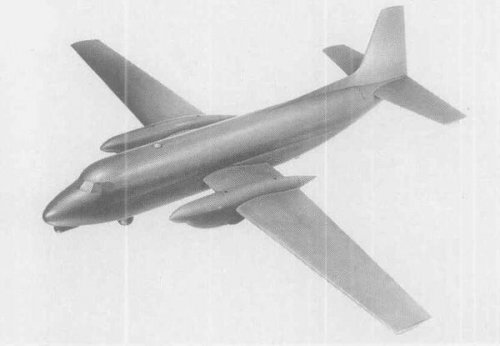So gents, out of curiosity, did we ever find what this NBMR designation was i.e
NBMR-?
Regards
Pioneer
It stood for NATO Basic Military Requirement.
As you can see in my post on January 6, the Basic Military Requirement for Atlantic (see Pioneer's request) was NBMR-2.
In fact, other than the quoted NBMR-1 for the light fighter, NBMR-2 for the maritime patroller, NBMR-3/169a for the V/STOL supersonic fighter, NBMR-3/169b for a subsonic V/STOL fighter-bomber, NBMR-4 for a V/STOL tactical transport and NBMR-22 for a tactical transport, I can suppose that there were others (perhaps between -5 and -21) but I lack any info about.
Moreover there were also other important requirements involving the Eiropean NATO members but I don't know the official designations.
The first I can remember was the 1949 evaluation following the requirement for an all-weather interceptor fighter. The winner was the deHavilland DH.112 Venom NF Mk.51, with a target of building 1,000-1,100 aircraft with licence to various European industries. Washington suspended the program in July 1952. On January 22, 1953, for the same requirement USAF proposed a simplified version of the F-86D (originally intended as a two-seater) and the result was the F-86K Sabre Jet. Then F-86K, built under licence by FIAT for NATO countries, could be considered the winner of the first NATO contest (but I don't know the official designation of the requirement). One of possible contestant was the Gloster Javelin.
Not really a NATO contest was the 1958 German program for a military transport aircraft replacing the Nord N-2501 Noratlas. The result was an international requirement with several candidates, won by Arbeitsgemeinschaft Transporter Allianz C-160 Transall, but most NATO countries preferred the Lockheed C-130 Hercules and only France, Germany and Turkey bought the C-160 (also South Africa, onviously not a NATO member). Perhaps one of the losers was Armstrong-Siddeley AW-681.
Another important NATO requirement was the May 1956 one for the F-86K replacement, won, as we know, by Lockheed F-104G Starfighter that was built by a "production ring" including Messerschmitt, Dornier, Heinkel, Siebel, Fokker, Aviolanda, HFB, SABCA, Avions Fairey, FIAT Aviazione and Aermacchi for airframes and final assembly.
Nico
No sorry Stéphane, what I meant was what was the NBMR designation for what would become the Atlantic ASW/MP aircraft.........NBMR??
Regards
Pioneer




